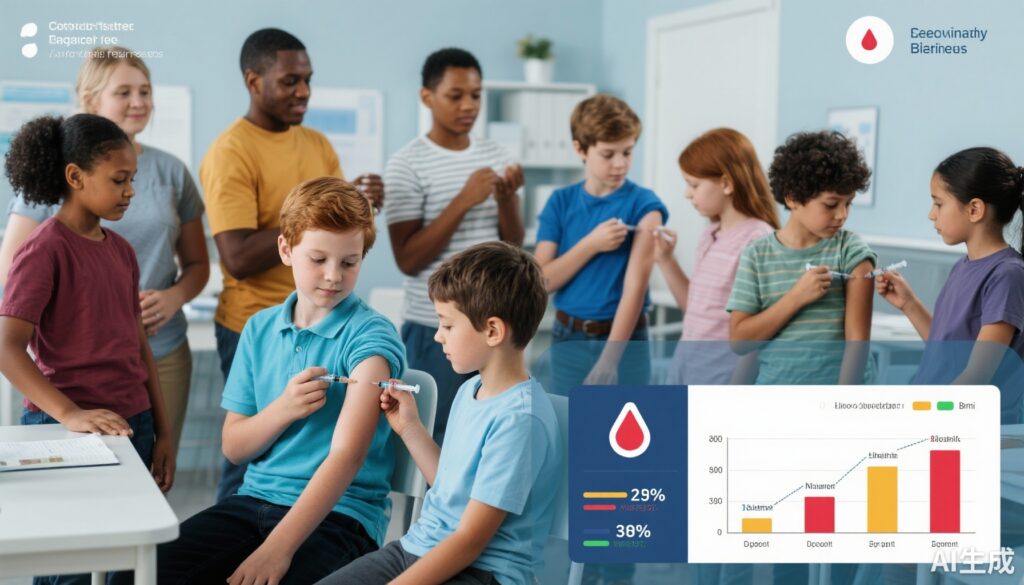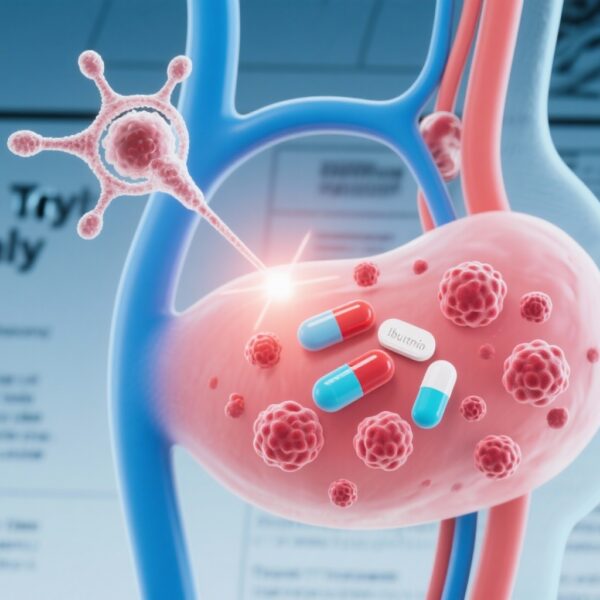Highlight
Tirzepatide, a dual GIP and GLP-1 receptor agonist, significantly reduced HbA1c and BMI in youth with type 2 diabetes compared to placebo over 30 weeks, with sustained benefits up to 52 weeks. The safety profile was consistent with previous adult data, primarily mild to moderate gastrointestinal adverse events.
Study Background
Youth-onset type 2 diabetes (T2D) presents a major clinical challenge with a rising prevalence worldwide, compounded by limited therapeutics demonstrating efficacy in this population. Compared to adults, youth with T2D often exhibit poorer glycaemic control and accelerated disease progression despite conventional treatments such as metformin and insulin. Innovative approaches targeting incretin pathways, such as glucagon-like peptide-1 (GLP-1) receptor agonists, have yielded promising results in adults. Tirzepatide, a novel dual glucose-dependent insulinotropic polypeptide (GIP) and GLP-1 receptor agonist, combines the benefits of both incretin hormones, potentially offering superior glycaemic and weight control. This trial (SURPASS-PEDS) evaluates tirzepatide’s safety and efficacy in children and adolescents with inadequately controlled T2D on background therapy.
Study Design
The SURPASS-PEDS trial was a multinational, multicentre, randomized, double-blind, placebo-controlled phase 3 study spanning 30 weeks followed by a 22-week open-label extension. Participants aged 10 to less than 18 years with type 2 diabetes inadequately controlled by metformin and/or basal insulin were randomized in a 1:1:1 ratio to receive subcutaneous tirzepatide 5 mg, tirzepatide 10 mg, or placebo. Randomization was stratified by age (≤14 or >14 years) and antihyperglycaemic medication use. Blinding was maintained during the treatment period to reduce bias. The primary endpoint was change in glycated haemoglobin (HbA1c) at week 30. Secondary endpoints included body mass index (BMI) change and safety assessments.
Key Findings
A total of 99 participants (mean age 14.7 years; 61% female) were included in the efficacy and safety analyses. Baseline HbA1c averaged 8.04%, indicating suboptimal glycaemic control at study entry.
Glycaemic Control: At 30 weeks, tirzepatide significantly lowered mean HbA1c by 2.23% compared to a negligible increase of 0.05% with placebo. The estimated treatment difference was -2.28% (95% CI: -2.87 to -1.69; p < 0.0001), reflecting robust superiority. This substantial reduction has clinical relevance, potentially translating into decreased microvascular and macrovascular complications risk.
Body Mass Index: Tirzepatide also produced significant weight-related benefits with BMI reductions of 7.4% and 11.2% in the 5 mg and 10 mg dose groups respectively, compared with a minimal 0.4% change in placebo. The dose-response relationship suggests dose escalation could amplify benefit in weight management among pediatric patients.
Sustainability: Both glycaemic improvements and BMI reductions were maintained through the 52-week open-label extension, indicating durable therapeutic effects.
Safety Profile: Tirzepatide-associated adverse events were predominantly gastrointestinal (nausea, vomiting, diarrhea), mild to moderate in severity, and decreased over time, paralleling adult studies. Two participants discontinued due to adverse events. Importantly, no deaths or unexpected safety signals emerged during the trial period, supporting tirzepatide’s tolerability in the pediatric population.
Expert Commentary
The SURPASS-PEDS trial addresses a significant unmet need by demonstrating the efficacy and safety of tirzepatide in children and adolescents, a demographic notoriously difficult to manage in type 2 diabetes. The dual agonism of GIP and GLP-1 receptors may accentuate insulin secretion and suppress glucagon while facilitating weight loss, explaining these favorable outcomes. Though the trial includes a relatively short double-blind phase and limited sample size, the magnitude of HbA1c and BMI reductions compared to placebo and consistency with adult data enhance confidence in clinical applicability.
It is noteworthy that the trial enrolled participants with inadequate control on metformin and/or basal insulin, suggesting tirzepatide’s promising role as an adjunct or alternative to traditional therapies. However, long-term safety data, cardiovascular outcomes, and real-world effectiveness in diverse pediatric populations remain to be elucidated. Consideration of gastrointestinal tolerability and potential injection burden is also essential in this age group where adherence can be challenging.
Conclusion
The SURPASS-PEDS phase 3 trial provides compelling evidence that tirzepatide significantly improves glycaemic control and reduces BMI in children and adolescents with type 2 diabetes inadequately managed by current standard therapies. The safety profile aligns with adult experiences, predominantly characterized by transient gastrointestinal side effects. These findings represent a meaningful advance in pediatric diabetes therapeutics, offering a novel mechanism of action with dual incretin receptor agonism and durable clinical benefits over one year. Future research should focus on longer-term outcomes, adherence strategies, and integration into pediatric diabetes care guidelines to optimize management of this challenging population.
References
Hannon TS, Chao LC, Barrientos-Pérez M, Pamidipati KC, Landó LF, Lee CJ, Patel H, Bergman BK. Efficacy and safety of tirzepatide in children and adolescents with type 2 diabetes (SURPASS-PEDS): a randomised, double-blind, placebo-controlled, phase 3 trial. Lancet. 2025 Oct 4;406(10511):1484-1496. doi: 10.1016/S0140-6736(25)01774-X. Epub 2025 Sep 17. Erratum in: Lancet. 2025 Oct 4;406(10511):1472. doi: 10.1016/S0140-6736(25)01961-0. PMID: 40975112.


